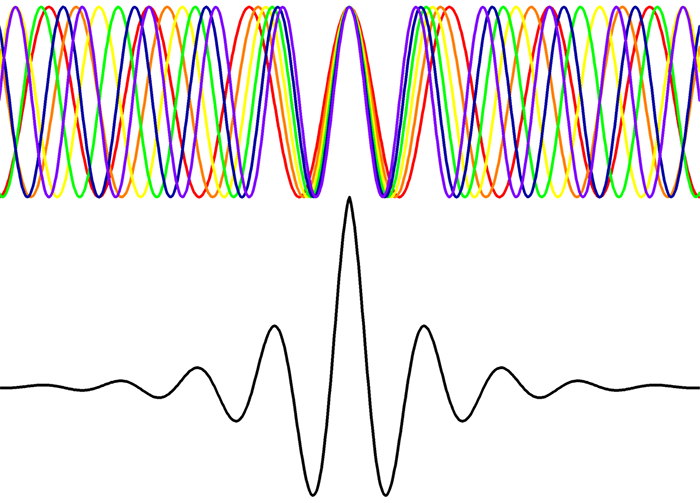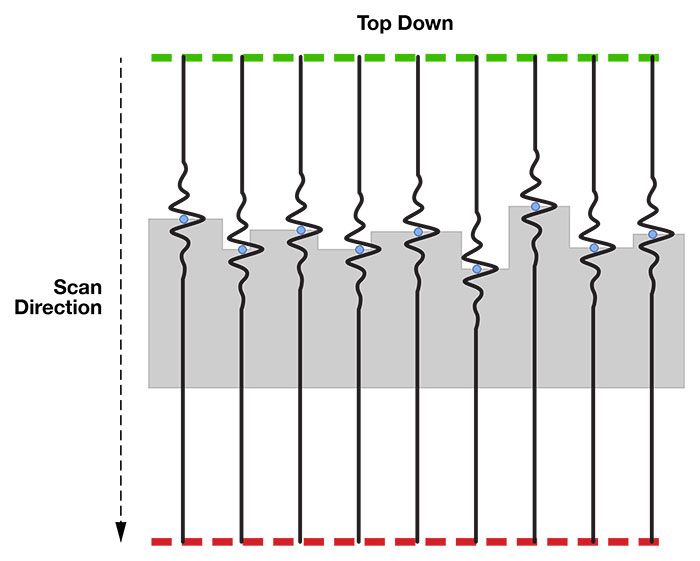Time to put it all together
- Light is a wave.
- Waves arriving at the same place in time (detector) can be characterized by their phase and intensity.
- A basic interferometer creates two beams from one source and sets up an interference pattern by combining a fixed reference path with a moving test path at the detector.
- Coherence between two waves refers to the ability of the waves to interfere with each other in an observable way.
- White light has a very short coherence length due to its wide distribution of frequencies.
- All combined, they make up the basics of coherence scanning interferometry.
Why white light?

The image to the left depicts a white light source (top) and its distribution of component colors. The coherence length length is inversely proportional to the bandwidth, so the coherence length is very short. The "random" noise of white light produces an inference signal only when the optical path difference between reference and test paths is less than the coherence length of the beam. This can be seen in the resultant wave at the bottom. That center fringe of highest intensity is our point of zero optical path difference and essentially the probe of the interferometer.
Coherence Scanning Interferometry (CSI)
CSI refers to a class of optical surface measurement methods wherein the localization of interference fringes during a scan of optical path length provides a means to determine surface characteristics such as topography, transparent film structure, and optical properties. See Wikipedia for more information about Coherence scanning interferometry.
The instrument works by scanning in Z and recording the Z position for each and every pixel on the detector for where zero optical path difference (ZOPD) occurred. The objectives are designed so the internal reference and the test path have zero optical path difference at the focal plan of the objective. So, as the scanner moves through Z, when the surface starts to come into focus for each pixel, the inference fringes will become measurable, and the Z position of the center fringe (highest intensity) is recorded as it passes through ZOPD. Our detector is a 1024x1024 camera, which means our scan results in 1,048,576 (x,y,z) coordinates that make up the image.

For more information on CSI, see the Wikipedia pages for CSI (Wikipedia) and White Light Interferometry (Wikipedia).